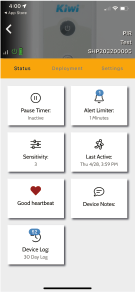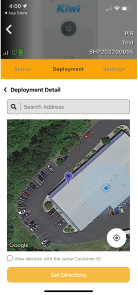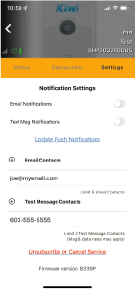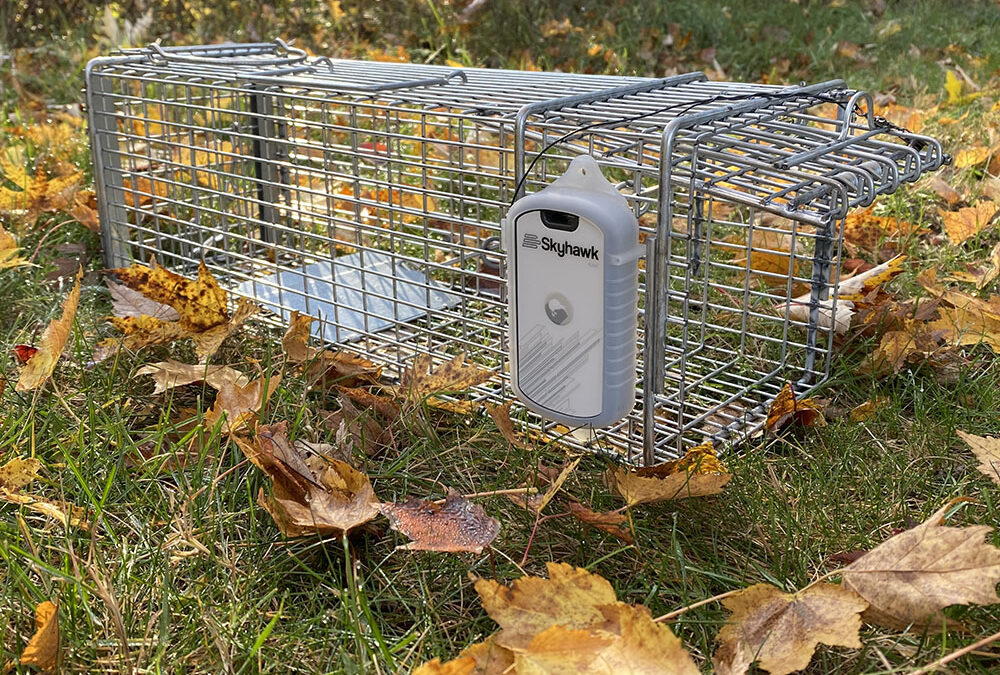By James Nase, Moyer Technical Service Manager
Over the past ten years, I have had the privilege to work alongside nuisance wildlife personnel and professional pest control operators in residential and commercial accounts, providing rodent control and wildlife services. During that time, technology-based remote trap monitoring systems have become more prevalent. I have had the opportunity to test a few early versions, played a part in developing those systems, and have continued testing the hardware and software. In this article, I’ll share my expertise and experience in trapping and remote trap monitoring to debunk common misconceptions, explain the benefits of various devices, share the importance of trap alerts in our business, and how remote monitoring solutions save time money, and resources. Read on for my recommendations for various remote monitoring devices, favorite traps, and tools of the trade.
The benefit of remote trap monitors and alerts
In my early experience testing remote trap monitors, I discovered that gray squirrels and groundhogs were captured quickly after initially setting the traps. With the amount of nuisance wildlife work performed in primarily residential neighborhoods, being aware of the timing was essential since the sooner I removed captures from the traps, the better. With today’s remote trap monitoring systems, there is no guesswork in knowing that capture occurred because the device uses repeated alerts versus in the past when you would receive a one-time notification that a trap door closed. A remote trap monitoring system can let you know the exact time of the capture, which helps the wildlife professional better prepare to remove the capture under many different circumstances. If I set a gray squirrel trap and a notification comes in at 2:00 AM, it’s apparent that I didn’t catch a squirrel but rather a skunk, opossum, or raccoon due to their nocturnal activity. Ideally, it helped me be better prepared to remove a captured skunk!
Technology benefits for remote monitoring
Technology has been an enormous benefit for remote trap alert monitors. The remote trap monitoring system I currently use and have had tremendous success with is the Skyhawk’s Kiwi Trapmate with the Skyhawk CE smartphone app. The Kiwi Trapmate is quick and easy to set up; unlike other systems, it requires no power source and allows the user to adjust the sensitivity and even put the alerts to sleep as they start to come in. A notification is sent to your smartphone via text or email, giving you an intuitive, familiar view to aid in trap alerts and monitoring. Once the app is downloaded, it allows the user to quickly set up trap monitors, enter the location and adjust the sensitivity. Once alerts start coming in and continue to register movement, the alert can be paused until you can estimate how long it will be before reaching the site. On average, the alert is activated, and within 30 seconds, a notification is received by email or text that the remote sensor is active. The app allows for two text users and up to five emails to receive alerts.
Skyhawk’s CE App is easy to use

Easily Mark Location

One Button Sensitivity

Enter Texts and Emails
The Kiwi Trapmate – ideal for single traps
Skyhawk has two options for remote trap monitoring, the Kiwi Trapmate and the Hub & Vibration/Magnet Sensors. First, the Kiwi Trapmate is a standalone monitor that can be placed on almost any trap on the market. I rely on the Kiwi Trapmate for single traps to confirm that I have captured an animal and determine how I should respond. The Kiwi Trapmate works exceptionally well on “One Way Door” devices and will send alerts when an animal enters. When I receive repeated notifications, it is clear I have a capture. While testing the Kiwi Trapmate in the early stages, I received just one alert and no follow-up alerts from the testing location. I always set multiple traps no matter what I was trapping for and did not necessarily need to respond as quickly as I did. Still, this alert prompted me to visit the site where upon arrival, I saw that a tree branch fell on the trap triggering the trap and the vibration monitor.
The benefits of a magnet “pull” versus an accelerometer as a capture notification
The Kiwi Trapmate can be used with a magnet attached to the trap. Once the magnet is removed, you will receive a ”magnet removed” message meaning that it was “pulled” and warrants a visit to the site. If the trap is bumped by someone or something, but the magnet is not pulled, you will still receive an alert, but it does not indicate a capture. Therefore, saving time and money considering the cost of gas and labor running to and from the site for unsuccessful trapping. I have used the magnet on cage traps, quell traps, conibear traps, and others with the standalone Kiwi Trapmate on traps without the magnet attached. One of the outstanding features of the Kiwi Trapmate is that it does not need to be attached to the door. You can place it on the top, sides virtually anywhere you want.
Versatility
Skyhawk’s remote trap monitors are truly versatile systems. Skyhawk’s second option for remote trap monitoring is the Hub & Vibration/Magnet Sensors, which share many of the same features as the Kiwi Trapmate. However, The Hub & Vibration/Magnet Sensors give you the ability to monitor multiple traps within their given range. One of the best examples in my experience was a warehouse that had to be serviced for a significant house mouse issue. The situation was complex as it spanned three warehouse levels, and 40 mouse traps total was set on all three levels. When alerts came in, the technician was directed to the correct floor and the precise traps to be checked. This capability was a tremendous time-saver, and the technician was more satisfied when checking traps with confirmed captures versus checking every device for potential captures every time. Around this time started using a different style trap for vole control. I would place the sensor on top and ran the line to the trap with the magnet attached. Again, I could tell the technician which trap was triggered.
Cost
When nuisance wildlife or a pest control operator explores the pros and cons of any product, it always comes down to cost. How much will this set my business back? How much will it financially benefit me? There is the cost of the equipment and the usage fees associated with the equipment. Ask yourself this, how much are you spending on gas alone to check traps that may be empty? Hiring quality personnel to perform trap checking has become a real issue. Checking traps without captures time and time again can be very frustrating to a technician. The trapping shows no end in sight as far as resolution and compensation.
My recommendation is to research information on remote monitoring systems. Multiple companies provide remote monitoring solutions, and it would benefit you to evaluate several relevant to the service you offer and what works best for your business. The Skyhawk remote trap monitoring system works for me. It has all these features and benefits and does not have to use a customer’s electrical source since it runs on batteries, it’s easy and quick to set up, and weatherproof. All of this together makes this the ideal tool for me.
I would enjoy hearing from anyone interested in remote sensors and would be happy to answer any of your questions about traps and sensors and how to make them work together. Please feel free to email me your questions at [email protected]
Happy Trapping!
James Nase
Moyer Technical Service Manager

